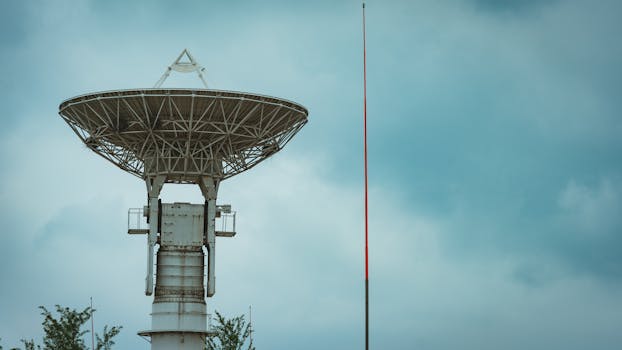The Future of Satellites: Revolutionizing Global Connectivity
The future of satellites is poised to revolutionize global connectivity, enabling faster and more reliable communication networks. With advancements in space technology, satellites are becoming increasingly important for various industries, including telecommunications, navigation, and weather forecasting.

The Future of Satellites: Revolutionizing Global Connectivity
The future of satellites is poised to revolutionize global connectivity, enabling faster and more reliable communication networks. With advancements in space technology, satellites are becoming increasingly important for various industries, including telecommunications, navigation, and weather forecasting. The future of satellites holds immense potential, and it is essential to explore the latest trends and developments in this field.
One of the primary drivers of the satellite industry is the growing demand for global connectivity. As the world becomes increasingly interconnected, the need for fast and reliable communication networks is on the rise. Satellites are playing a crucial role in bridging the digital divide, providing internet access to remote and underserved communities. Companies like SpaceX, Amazon, and OneWeb are launching constellations of satellites in low-Earth orbit to provide high-speed internet services, enabling people to stay connected from anywhere in the world.
Advancements in Space Technology
Recent advancements in space technology have significantly improved the capabilities of satellites. The development of smaller, more efficient satellites has reduced the cost of launching and operating them. Additionally, advancements in propulsion systems, such as electric propulsion, have enabled satellites to maneuver more efficiently and extend their lifespan. The use of advanced materials, such as carbon fiber and nanomaterials, has also improved the structural integrity and durability of satellites.
The integration of artificial intelligence (AI) and machine learning (ML) is another significant trend in the satellite industry. AI-powered satellites can analyze vast amounts of data, enabling them to make decisions autonomously and optimize their performance. For instance, AI-powered satellites can adjust their orbit and transmission power to ensure optimal communication with ground stations. ML algorithms can also be used to predict and prevent satellite failures, reducing downtime and improving overall system reliability.
Applications of Satellites
Satellites have a wide range of applications across various industries. In the telecommunications sector, satellites provide critical infrastructure for mobile networks, enabling communication services in remote and underserved areas. Satellites are also used for navigation, providing location information and timing signals for GPS, GLONASS, and other navigation systems. Weather forecasting is another critical application of satellites, with geostationary satellites providing high-resolution images of clouds, precipitation, and other weather patterns.
In addition to these traditional applications, satellites are being used for new and innovative purposes. For instance, satellites are being used for Earth observation, providing high-resolution images of the planet’s surface, oceans, and atmosphere. Satellites are also being used for space exploration, enabling scientists to study the universe and conduct research in space. The use of satellites for commercial purposes, such as satellite-based advertising and entertainment, is also on the rise.
Challenges and Opportunities
Despite the many opportunities presented by the satellite industry, there are also significant challenges to be addressed. One of the primary concerns is the growing problem of space debris, with thousands of defunct satellites and other objects orbiting the Earth. The risk of collisions between satellites and other objects is increasing, posing a threat to the entire satellite ecosystem. Regulatory frameworks are also evolving, with governments and international organizations working to develop standards and guidelines for the satellite industry.
However, these challenges also present opportunities for innovation and growth. The development of new technologies, such as satellite-based propulsion systems and advanced materials, can help reduce the risk of space debris and improve the sustainability of satellite operations. The growth of the satellite industry also presents opportunities for new businesses and entrepreneurs, with many startups and small businesses emerging to provide innovative satellite-based services and solutions.



